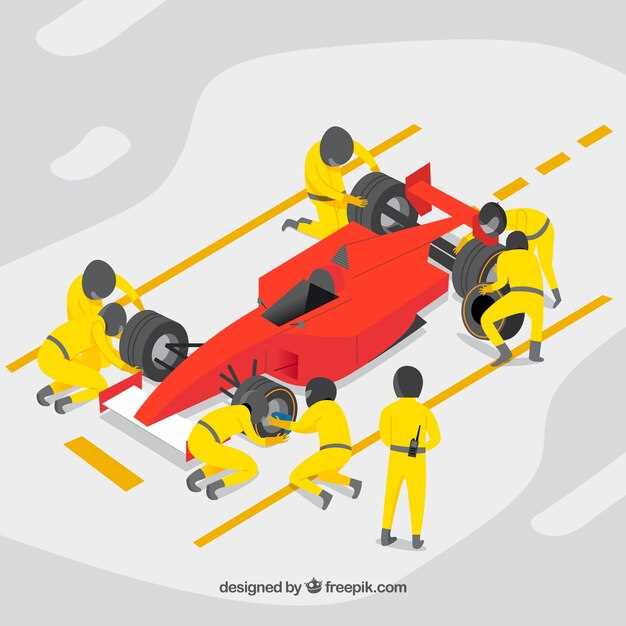
The concept of downforce is pivotal in the realm of motorsport, playing a crucial role in the performance and handling of race cars. This aerodynamic force is generated by the airflow over the vehicle’s body and is essential for enhancing grip and stability at high speeds. As cars accelerate, the shape and design of their components work synergistically to push them towards the track, maintaining contact with the racing surface and allowing for sharper turns and faster lap times.
Downforce is not merely a function of speed; it is intricately linked to the design of the car itself. Elements such as wings, diffusers, and body contours are strategically engineered to maximize this aerodynamic principle. A well-designed car can experience significant increases in grip, translating into improved cornering speeds and reduced tire wear. Consequently, understanding and optimizing downforce becomes a fundamental aspect of race car engineering and setup.
The impact of downforce extends beyond mere physics; it directly influences race strategy and driver performance. Drivers must adapt their approach based on the levels of downforce available, which can vary not only between different track conditions but also due to specific configuration settings chosen prior to the race. In high-speed environments, the balance between downforce and drag becomes critical, as excessive downforce can lead to increased resistance, ultimately slowing the car down. Thus, achieving the right balance is essential for maximizing performance on the track.
How Aerodynamics Shape Downforce in Different Racing Conditions
Aerodynamics plays a crucial role in determining downforce, which significantly influences a race car’s performance across various racing conditions. Downforce is generated through specialized components such as wings, diffusers, and body shapes that manipulate airflow around the car, enhancing stability and grip on the track.
In low-speed conditions, such as tight corners, cars rely heavily on aerodynamic features that create downforce without generating excessive drag. The design of front and rear wings is paramount in this scenario. Proper angle of attack and curvature can optimize air passage and maximize the downforce, allowing drivers to maintain control and navigate through turns effectively.
High-speed racing, on the other hand, necessitates a different aerodynamic balance. As speeds increase, the airflow becomes more aggressive, and the car experiences greater lift forces. To counteract this, engineers design aerodynamic elements that not only enhance downforce but also reduce drag. This is achieved through streamlined shapes that allow air to flow smoothly over the car, preserving speed while ensuring stability at high velocities.
Wet or slippery conditions complicate the aerodynamic landscape further. Reduced grip due to moisture requires enhanced downforce to maintain stability. Teams often adjust the aerodynamic settings of the car to maximize contact with the track, employing softer suspension setups and increasing downforce through adjustable aerodynamic components. This adjustment helps to counteract the reduced friction from wet surfaces, allowing drivers to maintain confidence in their handling.
Each racing condition demands a dynamic approach to aerodynamics and downforce adjustments. Teams must carefully analyze track scenarios, weather conditions, and car balance to optimize their setups. Consequently, a comprehensive understanding of how aerodynamics shapes downforce is essential for achieving peak performance and maintaining competitive advantages in racing environments.
The Relationship Between Downforce and Vehicle Stability at High Speeds

Downforce plays a critical role in enhancing the stability of a vehicle during high-speed racing. As a car accelerates, the aerodynamic forces acting upon it change significantly. Increased downforce generates a stronger grip on the road surface by pushing the vehicle downward, effectively increasing the tire’s contact patch. This improved adhesion is essential for maintaining stability, especially when navigating high-speed turns.
When a vehicle experiences low downforce, it becomes more susceptible to losing traction, particularly in corners or during sudden maneuvers. The lack of stability can lead to oversteer or understeer, causing the car to either skid outwards or struggle to turn. The precise adjustment of aerodynamic components, such as wings and splitters, can dramatically influence the vehicle’s performance characteristics. A well-designed aerodynamic setup allows racers to attack corners with confidence, relying on the enhanced grip provided by optimal downforce levels.
Moreover, at high speeds, the relationship between downforce and stability is compounded by tire characteristics and suspension setup. Tires must be able to handle the increased forces without losing effectiveness. Consequently, the interaction between downforce and vehicle dynamics becomes a complex interplay that requires precise calibration to maximize performance without compromising safety.
In summary, downforce is vital for achieving stability at high speeds in racing scenarios. Its impact on grip influences handling and driver confidence, which ultimately affects overall race performance. Achieving the right balance of downforce is essential for maintaining control and optimizing a vehicle’s capabilities on the track.
Adjusting Downforce for Optimal Performance in Various Track Layouts

Downforce plays a crucial role in enhancing a car’s grip on the track, ensuring optimal performance across different racing environments. Adjusting downforce levels allows teams to optimize their vehicles for specific track layouts, which can vary significantly in terms of straightaways, corners, and elevation changes.
In high-speed tracks, where long straights dominate, a lower downforce setting is often preferable. This configuration reduces drag, enabling cars to achieve higher top speeds. However, it compromises cornering stability, making the car more challenging to handle in tight turns. Therefore, teams must strike a balance to ensure competitive performance without sacrificing control.
Conversely, technical circuits with numerous curves benefit from increased downforce. A higher downforce setting enhances tire grip, allowing for faster cornering speeds and improved handling. This adjustment helps maintain traction, especially in challenging sections where precision is paramount. While the trade-off may result in reduced straight-line speed, the improved stability often translates to faster lap times.
Weather conditions can also influence downforce adjustments. In wet conditions, for instance, maximizing downforce enhances grip on slippery surfaces. Teams may opt for medium to high downforce settings to counteract reduced traction, helping drivers maintain control under adverse circumstances.
Ultimately, the ability to swiftly adjust downforce is a critical aspect of race strategy. Analyzing track characteristics, driver preferences, and weather conditions allows teams to fine-tune their setups. This adaptability can be the difference between victory and defeat in the highly competitive world of motorsport.



